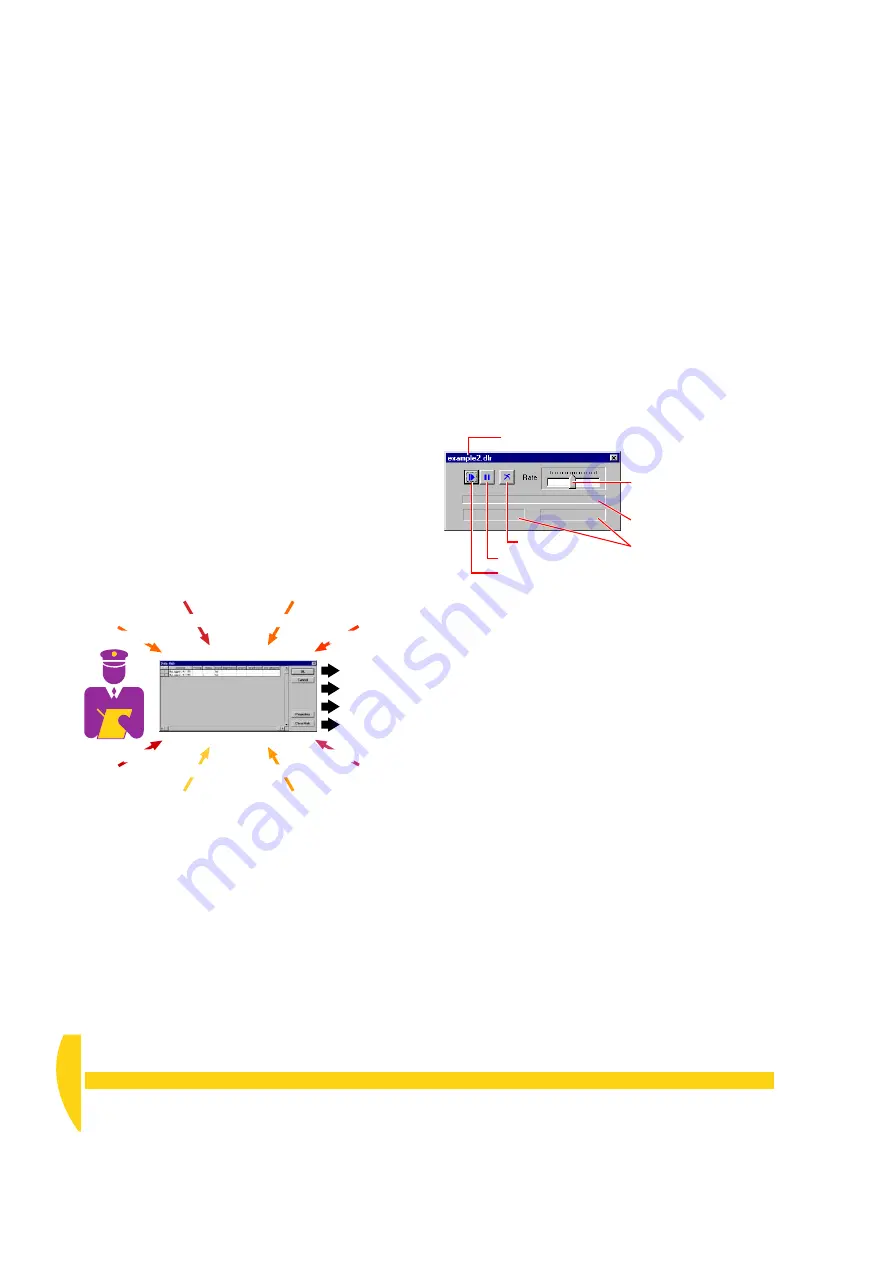
30
Getting Started with DT800
dataTaker
UM-0071-A0
Data Hub
An indispensable table in DeLogger’s database that
stores details of every channel known to DeLogger
during the current Connection (Figure 24).
Think of the data hub as a “resource controller” whose
function is to
• monitor which channels are available
(it does this — from all the data sites you’re currently
connected to; see the Extras panel “How Many
Connections?” — every time you save a program
builder window, send a program to the DT800, or
otherwise communicate with a data site)
• keep an up-to-date list of available channels and
their details
• compare available data site channels against those
you’ve assigned in the current project’s windows
and warn you of any mismatch — that is, if any
channels defined in DeLogger’s windows aren’t
currently available from the connected data site(s)
• make valid channels available for you to use in the
various DeLogger windows.
When you disconnect from a data site, that site’s
information is automatically cleared from the hub.
Real-Time Data
Data returned to the computer in real time — that is,
the moment it is obtained by the DT800.
Logged Data
Data stored in the DT800’s internal memory or in an
inserted memory card.
You retrieve logged data using the
Unload…
command
on DeLogger’s
dataTaker
menu.
The DT800 can log data and return real-time data at
the same time.
Replay Data, Replay File
Replay data
is data saved in a computer file (a
replay
file
, *.dlr) in a format that DeLogger can replay to its
form, chart, text and mimic windows, just as if the data
was arriving in real time (except that you can control
the speed of the replay; see Figure 25).
You can save both
• real-time data and
• logged data unloaded from a DT800
as a replay file.
DeLogger can also replay existing
*.dx8
and
*.dxu
files (
dataTaker unload files).
A replay file is just another data site: to link to it, you
use a DeLogger Connection called a
replay file
Connection
(or a
file Connection
or a
replay
Connection
).
You use the File tab in the
Connections
menu >
Properties
dialog box to create and edit replay file
Front-Most Window
The DeLogger window that is in front of any others on
your screen. Its title bar is more brightly colored than
all the others, and it’s always the last window you
clicked on. Sometimes known as the “current”, “top-
level”, “active” or “focus” window.
We don’t use the term “active window” because
DeLogger windows behind the front-most window can
still be active. For example, values in a background
form window can change as data arrives.
Data
site
Data
site
Data
site
Data hub
Data hub
Data
site
Data
site
Data
site
Data
site
Data
site
CHANNEL
DETAILS
CHANNEL
DETAILS
CHANNEL
DETAILS
CHANNEL
DETAILS
CHANNEL
DETAILS
CHANNEL
DETAILS
CHANNEL
DETAILS
CHANNEL
DETAILS
Makes valid
channels
available to
DeLogger
views
F
IGURE
24
Data hub — DeLogger: one Connection at
a time; DeLogger Pro: several Connections at a time
Drag pointer to adjust
replay speed
Name of the file to be replayed
Reset
Play
Pause
Replay progress bar
Date and time of the
record currently being
replayed
F
IGURE
25
DeLogger’s replay control panel
Содержание DT800
Страница 1: ...UM 0071 A0 ...
Страница 2: ...UM 0071 A0 ...
Страница 73: ...UM 0071 A0 ...
Страница 74: ...UM 0071 A0 ...








































